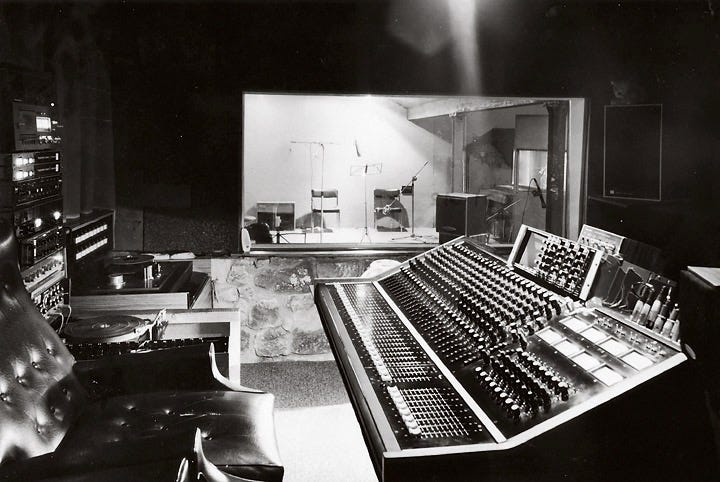Analogue (analog) recording
I am reviving my YouTube channel to focus on gear, recording and how to do general audio shit. 49 years of experience from making mistakes and then learning from them teaches you a lot.
We cover a lot of ground on our blog. Some articles cover topics of general interest, while others are more esoteric. This is one of the latter.
Suzy and I love analogue
If you read anything about us, it quickly becomes clear that we love all things analogue (or for our friends in the USA analog), from vinyl records, physical art, paper books, film photography and the tools of our trade - musical instruments and equipment.
The democratisation of music-making by the use of computers has come with a cost in that the skills of recording using analogue equipment are quickly being lost and so I have decided to share my take on playing and recording music the old-school way.
Brass balls

Through a combination of sheer fluke and brass balls, I managed to get into the Manchester session scene not long after I first picked up a guitar. It was around 1976 and studio work was abundant. Sessions and teaching by day - gigs almost every night.
I always hung around after the recording sessions as I loved the studio vibe and was curious about the recording process.
Abbey Road was released in 1969 and arguably the greatest records ever made were created in the mid-60s to mid-70s, consequently, studio engineers and producers were at the top of their game. I was learning from the best.
The conversations in the pub were just as valuable as time in the studio. I must have been a right pest.
My knowledge of how to solder and put together equipment came later from a stint working with legendary Michaels Spratt and Huck at Wigwam Acoustics, David Solari at Autograph in London and a very long conversation with one of the most respected audio engineers of all time, Rupert Neve.
So from this combined experience and with the expert video assistance of my wife and musical collaborator Suzy Starlite, I am publishing the series on my own YouTube channel.
Don’t forget to subscribe and hit the bell icon to be notified of new videos when they become available.
Some videos…
This is the latest video - an introduction to patch bays - which are the heart of any analogue recording studio and provide the interface to quickly connect the recording console to outboard units such as compressors, gates, microphone preamps and time-based effects such as reverbs, delays and other devices. It also provides easy access to tie lines and microphone inputs from all around the studio.
Lockdown
During the COVID-19 lockdown, the Supertone studio was located in Germany and we recorded four guides that until today, were available only to our subscribers. In light of the new series, we thought it was a good time to make them available to all.
An introduction to microphones
Miking guitar and bass cabinets
Creating musical parts and sounds to serve the song
Microphone preamps
And finally…
I hope you enjoy these little snippets and as ever, if you have any questions pop them in the comments section below or on the specific YouTube video.
See you next time
Much love
Simon


